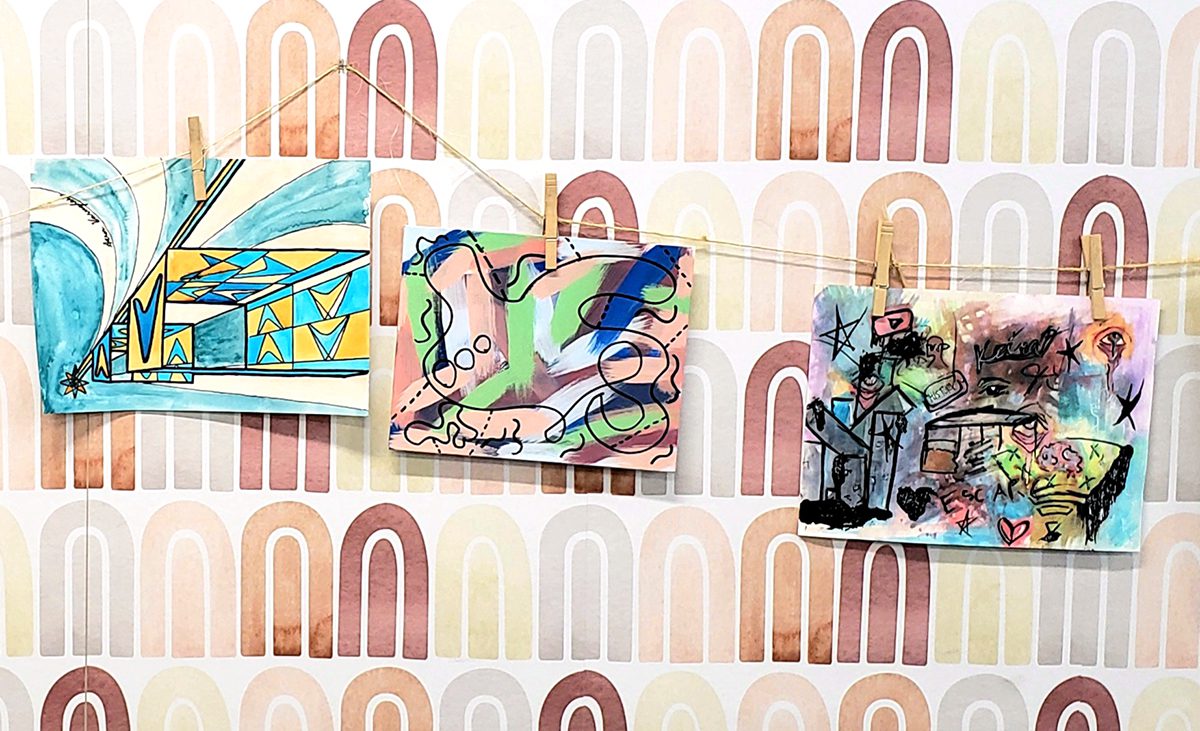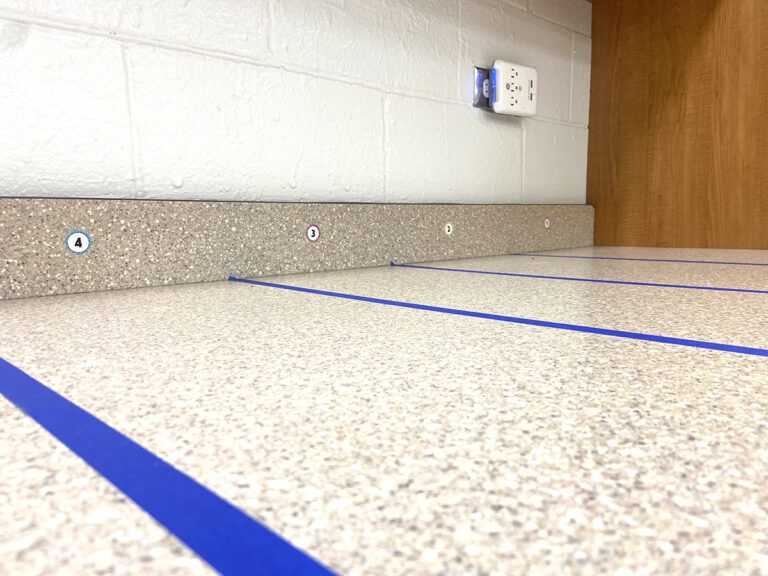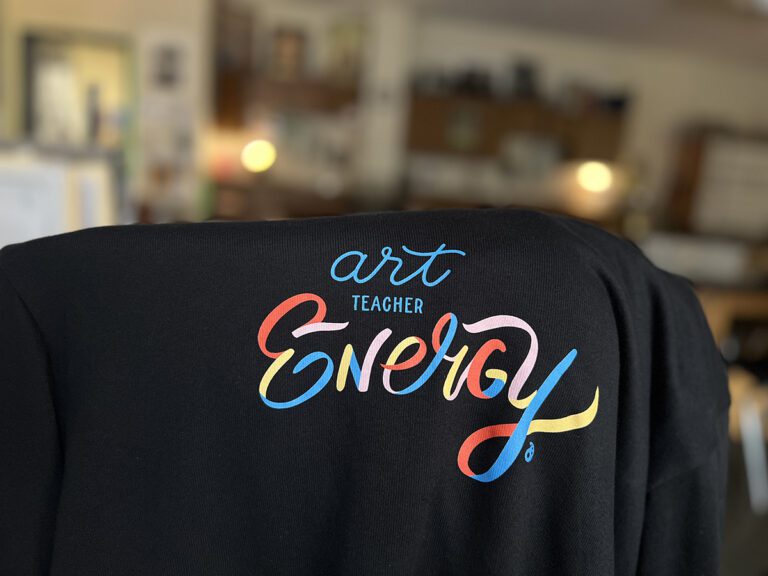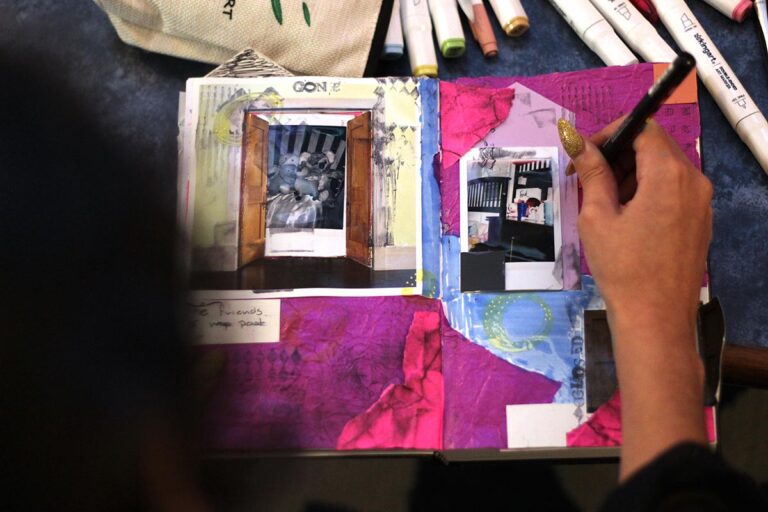Teaching is a stressful job. Our basic duties are overwhelming, and the district, administration, parents, and students can add even more expectations. It’s easy to fall into the trap of doing it all. Often, the tasks we take on over the years blur with the job’s requirements. If you feel overwhelmed, examine what is on your plate. Determine what tasks you can let go of or shift to make easier.
Here are eight things you can take off your plate to reduce your stress.
Loaning Out Supplies
Let it go.
We love to see other classes getting artsy, but it can lead to students interrupting your class to borrow supplies. It also can put a strain on an already-tight art budget. Don’t be afraid to say no. Put a sign on your door kindly stating that your art supplies are only for art students working on art projects. It won’t deter all students from asking, but it will limit the number of times you have to say no.
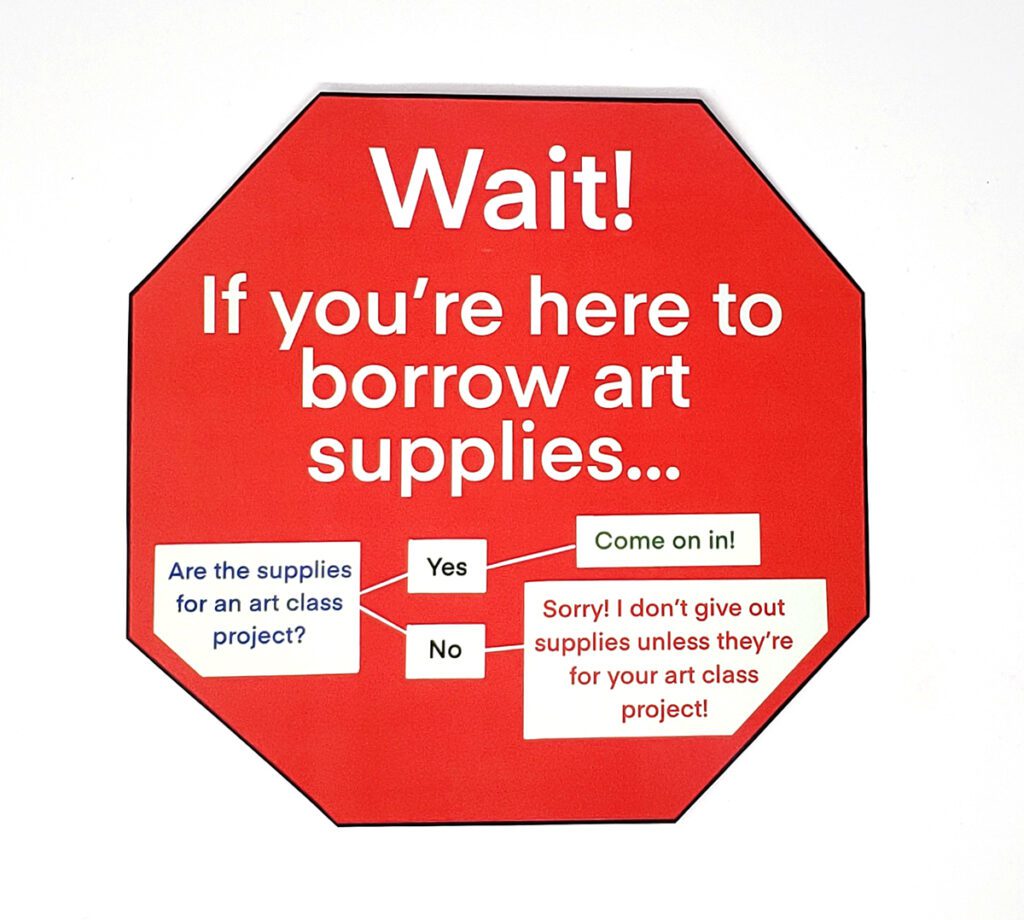
Make it easier.
If you can’t bring yourself to say no all the time, set out a box of materials you are willing to loan out. It shows that you are willing to help students while limiting what you will let them borrow. Keeping it all in one bin also prevents you from having to step away from your class to get supplies for students not in your class. Take it one step further and create a signup sheet for returnable supplies so you can keep track of anything you may need back.
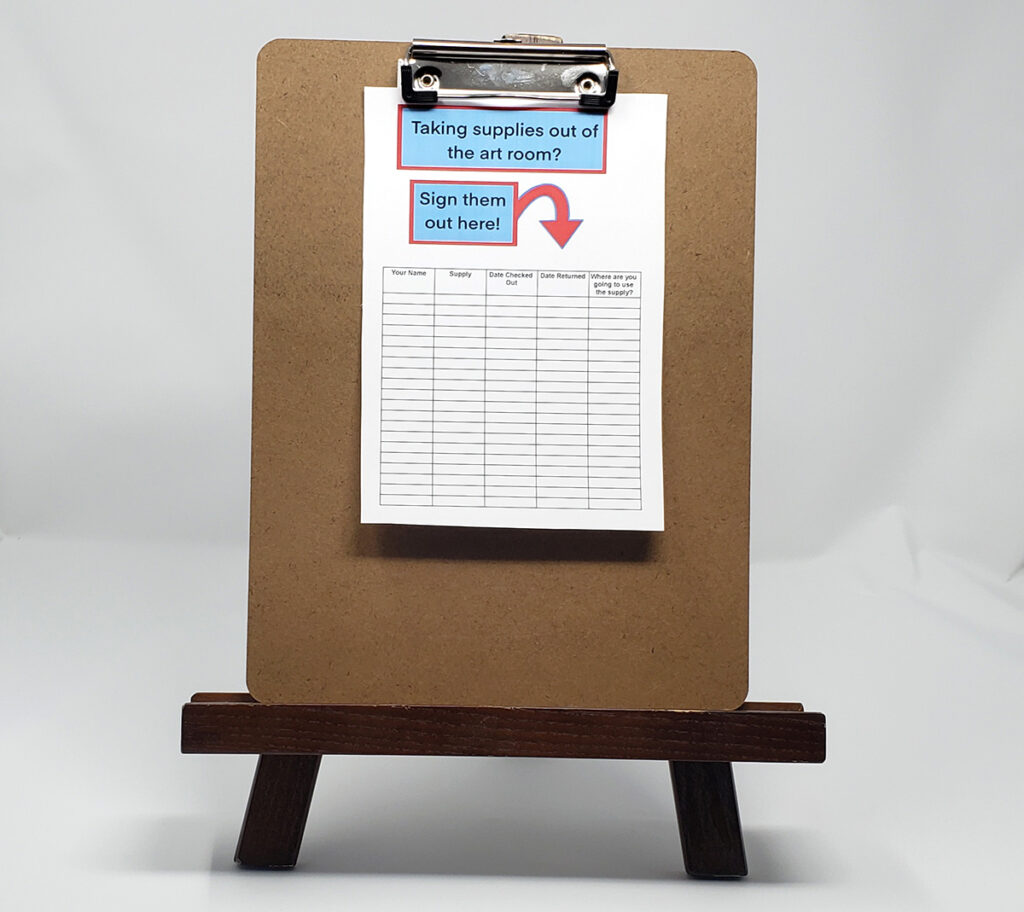
Consider the factors below when choosing which supplies to make available for checkout:
- Can the supply be returned in the same condition it was borrowed in?
Providing other classes with consumable supplies gets expensive. And once you let some students borrow supplies, others will expect the same treatment. Limit the supplies you lend out to non-consumables to prevent the appearance of favoritism. Remember, other teachers have their own budgets for classroom projects. It’s not your responsibility to provide supplies just because you have them. - Is it permanently labeled?
If not, it won’t easily find its way back to the art room if the borrower forgets to return it. - Is it easily replaceable?
Accidents happen. Students are forgetful and sometimes rough with supplies. If it’s expensive to replace, don’t let students use it without being under your direct supervision. - Is it safe?
Avoid letting students take materials like needles, utility knives, or hot glue guns out of the classroom. No matter how much you trust the student you loan the supply to, you can’t risk an accident.
Projects for Other Teachers
Let it go.
The theater program wants you to design their backdrops, the athletics department wants posters for the big game, and somehow you volunteered to make the school dance decorations. While it’s valiant to help your coworkers and pitch in where you can, don’t be too quick to say yes. Take a minute to evaluate your capacity to take on something else. If you are stressed, it’s okay to say no. There will be other opportunities to say yes when you have more energy.
Make it easier.
When you can’t bring yourself to say no, set boundaries and limitations to what extra projects you will take on. If you are asked to do too much, explain that you would be happy to help with certain aspects of the project but can’t do it all. Or, you can recommend certain students the other teacher can ask to help with the project. It still conveys you are willing to help and reminds others of your priorities.
Teacher-Directed Projects
Let it go.
If you are a Discipline-Based Art Education (DBAE) teacher, you may wonder how offering more choices can make your job easier. Think about how much time you spend creating teacher examples, differentiating the project elements and processes, and listening to students complain because they want to do something different. If the thought of all this work still sounds more manageable than having students working on different projects simultaneously, check out AOEU’s course, Choice-Based Art Education. You will learn all the processes and procedures to make offering choices easy and orderly.
Make it easier.
If you are not ready to dive right into a fully choice-based art curriculum, take smaller steps towards choice. Treat your classroom like a studio with centers. Start by letting students work with mediums you have already taught. Then, allow them to experiment and do self-directed art projects. Monitor and give demonstrations or reminders as needed.
If that’s still too much, choose one day of the week to introduce choice. On these days, let your students experiment with mediums and projects of their choice. If it goes well, introduce a little more choice. Even one day of choice-based freedom can reduce your workload.
Cleaning
Make it easier.
Okay—you probably can’t let go of this one completely, but you don’t have to drive yourself nuts trying to keep the art room perfectly clean. If cleaning is weighing you down and taking away time you can use to connect with your students, take a step back from it. Evaluate if your students can take more responsibility for their environment.
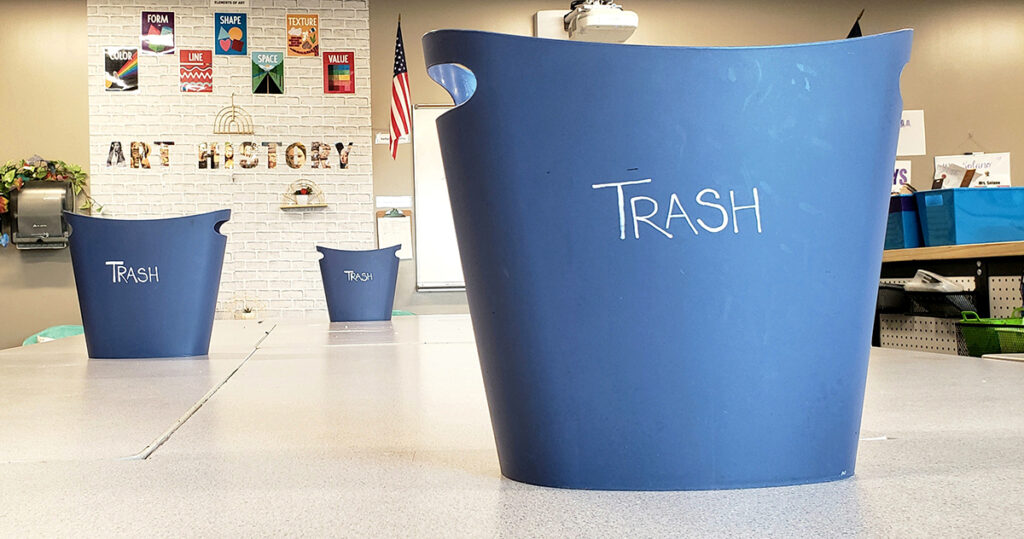
Here are three ways to get your students more involved in cleanup time:
- Put small trash cans on each table.
Often, students don’t want to get up to throw something away. Make it as convenient as possible by bringing the trash can to them. - Embrace students’ wiggly natures.
If you have a student who just can’t sit still, let them get their wiggles out by taking a lap around the art room. While doing so, they can pick up trash or supplies that need cleaning. Alternatively, if a student finishes their project early and doesn’t want to start another one, ask them if they would like to get a headstart on cleaning or helping their classmates pick up. If they aren’t a student who enjoys cleaning, this usually results in them jumping right into another project. You will either get a cleaner room or an art project out of it! - Incorporate an “inspection time” at the end of cleanup.
Set two alarms for the end of class: one for the beginning of cleanup time and the other a few minutes later for “inspection time.” At inspection time, walk around and make sure everything is clean and in its place. If things are out of place, ask students to correct them. Students quickly start to understand they aren’t going to get away with not cleaning up. While it’s still your responsibility to inspect and enforce cleanup, students will be much more inclined to clean up after themselves if they know you are going to hold them accountable.
Check out this article for more ways to increase student participation during cleanup.
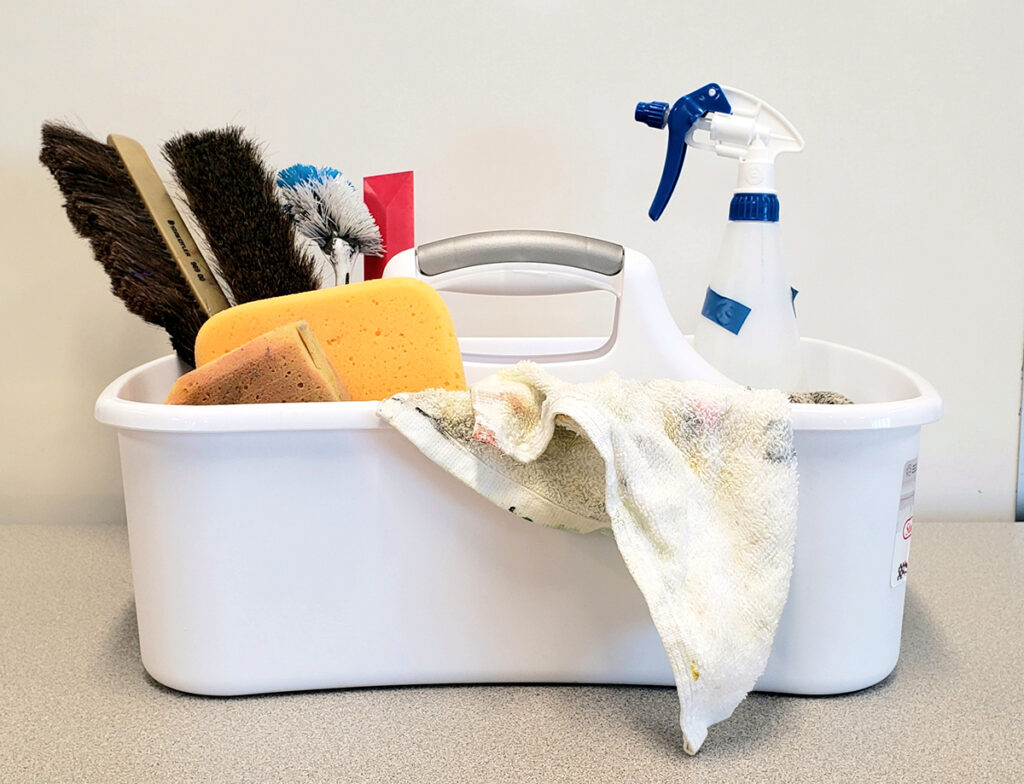
Physical Artwork Displays
Let it go.
Not all artwork displays need to be physical. Consider “displaying” your artwork digitally. If your students create digital portfolios, you already have their artwork compiled on a digital platform. All you need to do is throw up a flier with a QR code to lead readers directly to their portfolios! Alternatively, you can send the link in a newsletter or email to parents, staff, and district supervisors. This has the potential to get your students’ artwork in front of those who wouldn’t normally pass by the physical artwork display.
Make it easier.
Art teachers have a natural ability to make stunning artwork displays. However, this often leads to tackling the display solo for fear of it not turning out just right. Try outsourcing this one. With some direction, older students can take this off of your plate. Tell them how you want it done, demonstrate displaying one artwork yourself, then have them add their artwork to the display. You can always tweak the display, but the majority of the work will be good to go.
To make the process even more student-proof, avoid creating displays involving tape or museum paste on the back of each artwork. Instead, use twine with clothespins. String the clothespins onto the twine, then staple the twine to the wall. Even the youngest students can hang their own art with this method. You can help them straighten and evenly space the artwork to make it just right.
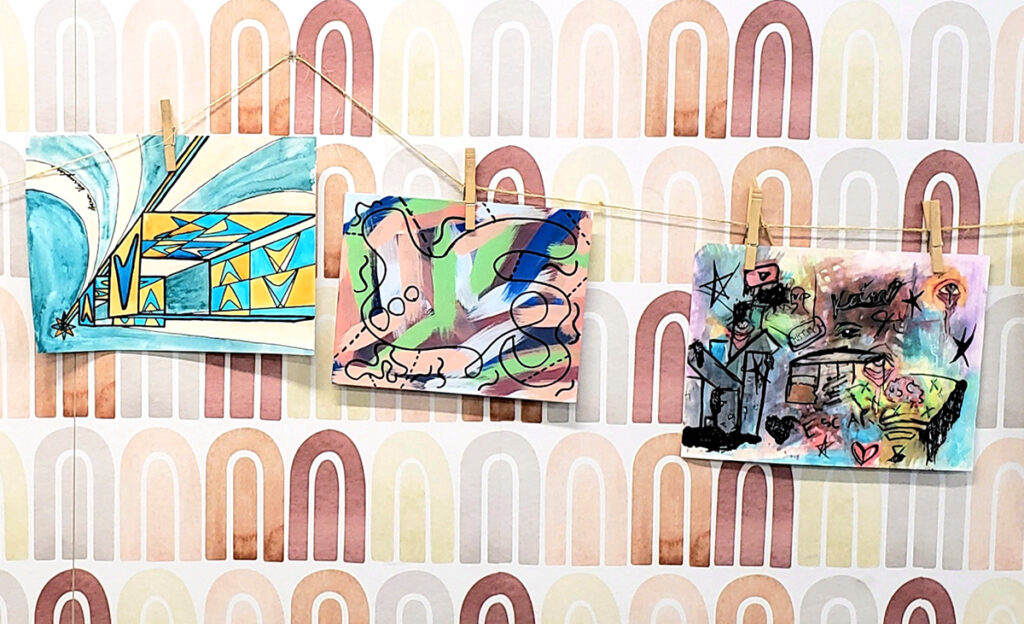
Matting Artwork
Let it go.
If you can’t find it within yourself to give up displaying artwork altogether, consider displaying work without matting it. Yes, matting each artwork gives the display a cohesive, professional look, but it isn’t necessary for more casual displays that change frequently.
Make it easier.
Many art teachers “mat” artwork by attaching it to a piece of black cardstock. This allows them to staple or pin the artwork to the wall without poking holes in the artwork itself. While this still elevates the look of the display, the backing is not essential. Ditch the black “mat” and hang the work with clothespins or plastic sheet protectors. Either method protects the work from staple or pushpin holes and allows students to display their own work.
Data
Let’s face it: while data is valuable, it can also be a chore. It takes a lot of forethought and preparation to determine what data to collect, create pre- and post-assessments, analyze the data, present the data, and then find ways to use the results to inform future instruction. Sometimes, digging through data feels like being down in the weeds instead of appreciating the natural growth of students simply being and experimenting in the art classroom.
Let it go.
Instead of going through the arduous data collection process, sit back and observe your students. Look at their faces as they work. Are they enjoying the process? Are they frustrated? Are they yearning for more choices, or do they need more direction? Put down the clipboard and just sit with them for a while. You may find you learn more about their needs and areas for growth from observation as opposed to translating their skills into a bar graph.
Make it easier.
Some of us aren’t lucky enough to be able to get out of collecting data altogether. Often, it’s a requirement of the district or school administration, and there are meetings where teachers present their data. Just because you can’t be free of the pesky data requirements doesn’t mean you can’t make it easier on yourself. There are platforms to instantly transform data into reports, making it less time-consuming to analyze and present.
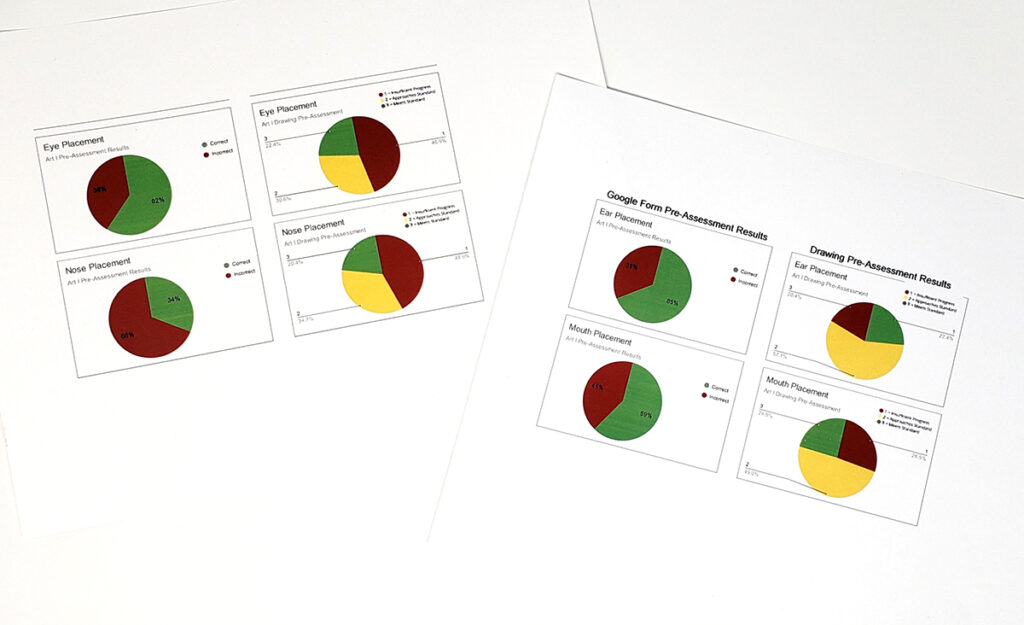
Explore these four resources that provide data reports for you:
Once you are ready to take on data again, or if data overwhelms you and you need more instruction on collecting, analyzing, and presenting data, check out AOEU’s course Assessment in Art Education. It gets into the nitty gritty details of data and provides invaluable resources to make your data-collecting life more manageable.
Labeling
Let it go.
Supplies in the art room are continually in flux. If you find yourself constantly labeling and relabeling, consider letting it go. There are more important things to spend your time on than peeling off labels and printing new ones every time a shipment of supplies arrives.
Make it easier.
Some teachers won’t want to give up labeling completely. After all, it’s a valuable resource, especially for English Language Learners, and helps reduce how many times per day students ask you where a supply is. If that describes you, consider attaching your labels with a hook-and-loop fastener so you can move the labels around without the hassle.

It’s time to practice self-care and determine what aspects of your job you can take off your plate or make easier on yourself. What tasks are required, and which are voluntary? When the feeling of overwhelm or burnout encroaches, let go of some responsibilities or determine how to streamline them. Whether that’s loaning out supplies, taking on projects for other teachers, teacher-directed projects, cleaning, physical art displays, matting artwork, collecting data, or labeling, there is something you can take off your plate. Remember, it’s not a “no” forever—just until you replenish your energy.
What tasks can you let go of?
What hacks have you found to make certain tasks easier?
Magazine articles and podcasts are opinions of professional education contributors and do not necessarily represent the position of the Art of Education University (AOEU) or its academic offerings. Contributors use terms in the way they are most often talked about in the scope of their educational experiences.
